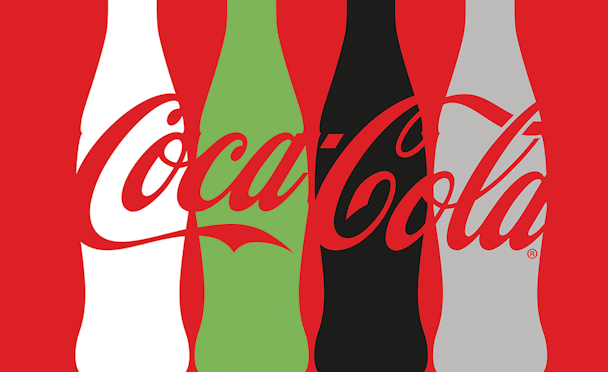Coca-Cola centralises social media marketing
Why is one of the world’s biggest advertisers Coca-Cola centralising its social media marketing? It’s less a shift in the traditional agency model and more a course correction to how things should function as brands reach social media maturity.

Coca-Cola centralises social media marketing for all its brands in the US
Having multiple agencies run different accounts independent of one another was expensive for the brand but didn’t result in a big difference to its business. Flat sales across its homeland this year are testament to that and so the company felt it needed to move its social media to a much lower cost base with high productivity benefits.
That shift created the North American Social Centre, a real-time newsroom to manage social media marketing for all the Coca-Cola trademarked brands (think Diet Coke, Fanta and Sprite). Staffed by 55 people, including marketers from Coca-Cola North America alongside executives from agencies Possible, Havas and Publicis-owned Moxie, they are focused on listening and analytics, content strategy, creation and publishing, community management, marketing science, legal and media buying.
It’s a tactic the business has already employed in markets like Mexico but whereas those efforts were motivated by cost efficiencies, the version it has brewed up for the US is primarily to unearth better quality. While Coca-Cola has a consistency in its marketing that few advertisers can match, its core themes of happiness, togetherness and refreshment are getting harder to communicate in an era when the fizzy drinks category is essentially flat.
“We are continuously looking for new and innovative ways to connect people with our brands. We recently adopted a global Coca-Cola system approach to how we plan, create and execute real-time social media marketing in the US,” said a Coca-Cola spokeswoman of the move. “With our agency partners, we are growing our social media expertise in-house and centralizing operations.”
It all sounds like what you’d find at any business with ambitions to become a real-time marketer. The difference is how Coca-Cola will make that happen; The Drum understands that an “empathy model” has been concocted by Possible that will allow the team to effectively see the emotions behind trending events online such as David Bowie’s death or the Olympics. Both events have been used to test the artificial intelligence-powered model earlier this year and in the case of the latter showed it could have a noticeable impact on ROI.
Coke’s team found creative based on insights on how people felt about the Rio Games was 26% more likely to be shared or viewed than those posts that did not. One Snapchat Lens created off the back of the AI and natural language processing was used on average of 18.95 seconds by people. To put that into perspective, with 18.95s average unique playtime across 13.69m unique plays that amounts to over 8.2 years of playtime with the Coca-Cola brand.
Possible declined to comment on the statistics, though a source close to the initiative confirmed them and revealed that the agency is leading the strategy’s development. A development process that’s spanned the bulk of 2016, with the WPP-owned shop being handed the brief at the start of the year when it replaced Wieden + Kennedy as Coca-Cola’s top digital agency.
This is certainly not a trend that should marginalise the role of agencies. The distinction is more that agencies and brands should be working together more closely in real time for the best social results, argued M&C Saatchi’s editorial director James Lachno.
“The platform and execution expertise from dedicated agency social media managers is invaluable, as is the objective eye they provide,” he continued. “Otherwise brands could trip up on promoting what they want, not what their audience does. This push and pull is likely to remain key to the best, timely, targeted social content being produced by Coke.”
Particularly at a time when global advertisers are starting to realise that they may not benefit from targeting super-specific audiences as Procter & Gamble found earlier in the year. It makes sense then why Coke would see utilising skilled agency teams with a keen journalistic, news–jacking eye in a real–time delivery environment as the way to gain a real edge in social media advertising.
Once mature, brands should in-house these types of skills, claimed Mark Manning, vice president of client services at Huge, with agency partners still very much involved as experts in areas where the marketing team hasn’t yet established a specialism. For instance, Huge recently worked with Nike on a Snapchat activation for Kobe Bryant’s Mamba Mentality tour in Europe, but the brand was the architect of the channel takeover and the agency was engaged for its expertise in what is still a relatively new channel compared to Facebook, Twitter or Instagram.
In saying all this, though, the irony here is that advertisers like Coca-Cola may have reached this level of social media maturity at a point when younger generations are starting to tune out from the very same channels brands now have the capability to manage “in-house”.
“I’m not predicting some cliched death of social media nor am I recommending brands aimlessly chase every new shiny object, but I am suggesting the channels brands can centralize at this point in time will not always be the right channels for connecting with the next generation of consumers,” added Manning.
For all the talk about personalisation at scale on social media, there’s still something to be said for mass reach. Constantly tracking social sentiment – as Coca-Cola is doing – dovetails neatly with this approach. But it, along with its peers, must not obscure their core objectives with chasing random engagement; everything needs to retain a brand lens.

